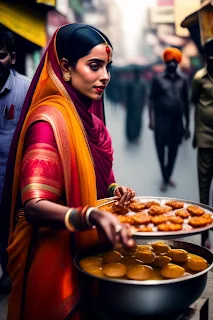What is India's main culture?
India is a country with a rich and diverse culture that has evolved over thousands of years. With over 1.3 billion people and a history that spans centuries, India's culture is incredibly varied and multifaceted. In this answer, we will attempt to provide a brief overview of India's main culture.
Religion:
Religion plays a significant role in Indian culture, with Hinduism being the largest religion, followed by Islam, Christianity, Sikhism, Buddhism, and Jainism. Hinduism is often considered the backbone of Indian culture, with its rich mythology, traditions, and customs influencing every aspect of daily life. The various festivals and rituals that are celebrated in India are often linked to religious practices and beliefs. For example, the celebration of Diwali, the festival of lights, is an important Hindu festival that celebrates the victory of light over darkness, good over evil.
Cuisine:
Indian cuisine is known for its diverse flavors and spices. Each region in India has its own unique style of cooking, with a variety of ingredients and spices used. Some of the staple dishes of Indian cuisine include biryani, samosas, naan bread, and curries. Vegetarianism is common in India due to religious and cultural beliefs, and many vegetarian dishes are popular across the country.
Clothing:
Traditional Indian clothing is vibrant and colorful, with different styles and designs specific to different regions. Women often wear saris, which are long pieces of fabric draped around the body, while men wear kurtas, which are long shirts. The traditional clothing of India is often adorned with intricate embroidery and beadwork, making it an important aspect of Indian culture.
Arts:
India has a rich tradition of art, with various forms such as painting, sculpture, music, dance, and literature. The ancient art of Indian classical music, for example, is said to have originated from the Vedas, ancient scriptures that form the foundation of Hinduism. Similarly, classical Indian dance forms such as Bharatanatyam, Kathak, and Manipuri have a long history, with intricate movements and storytelling. Indian literature has produced some of the greatest works of literature, such as the epics Ramayana and Mahabharata, and the poetry of Rabindranath Tagore.
Language:
India has a diverse range of languages spoken across the country, with Hindi being the most widely spoken language. However, there are also many other languages such as Bengali, Tamil, Telugu, Marathi, and Urdu, among others. Each language has its own unique history and culture, with many dialects and variations.
Traditions and customs:
India has a rich tradition of customs and rituals that are deeply ingrained in the culture. These include various forms of greeting, such as the namaste, which involves folding hands and bowing the head, and the tilak, which is a mark placed on the forehead. Other traditions include the celebration of festivals such as Holi, Raksha Bandhan, and Durga Puja, which are celebrated with great enthusiasm and zeal across the country.
Conclusion:
India's culture is incredibly rich and diverse, with a long and storied history. Its traditions, customs, and beliefs are deeply ingrained in the fabric of society and have influenced every aspect of daily life. From religion and cuisine to clothing and arts, India's culture is multifaceted and unique, with a vibrancy that is unmatched. Despite its diversity, however, India's culture is united by a shared sense of pride and heritage, making it a truly remarkable country.

